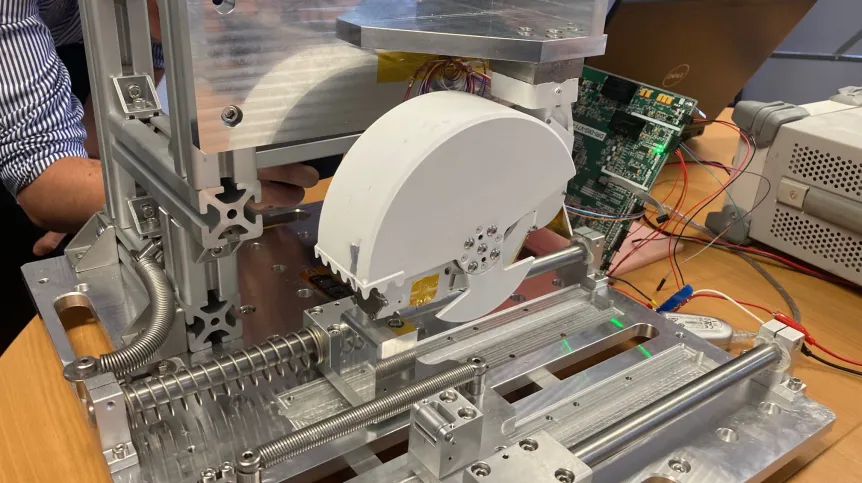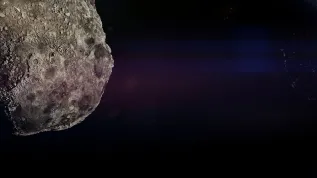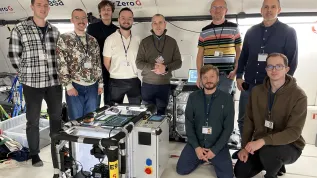
Scientists will test a space excavator for extracting lunar regolith. Tests in parabolic flight conditions - imitating the conditions of lunar gravity, without the influence of Earth's gravity - are scheduled for November.
TThe tests will be carried out by Polish scientists and engineers from the Space Research Centre of the Polish Academy of Sciences, the AGH University of Science and Technology in Kraków, the University of Warmia and Mazury in Olsztyn, and Spacive. They will take part in the 88th parabolic flight campaign of the European Space Agency (ESA), carried out in cooperation with the French company Novespace, the Space Research Centre PAS spokesperson Ewelina Zambrzycka-Kościelnicka told PAP.
'The campaign, conducted in unique conditions of parabolic flight, imitating conditions of reduced gravity, will enable conducting unique experiments in conditions analogous to lunar gravity. Interactions between mechanical devices and lunar regolith will be tested', Zambrzycka-Kościelnicka said.
According to Zambrzycka-Kościelnicka, the campaign is scheduled for November. The flight will take place over the Atlantic.
The main goal of the tests is to verify the technology for extracting lunar regolith - an element necessary for space missions based on the In-Situ Resource Utilization (ISRU) concept, which involves obtaining, processing and using raw materials directly in space. Regolith is the top, dusty layer of the Moon, which may be important for future manned missions to the Silver Globe. This dust consists mainly of oxygen, silicon, iron, calcium, titanium, aluminium and magnesium.
Regolith extraction technologies are also being developed by Polish scientific institutions. One of them is the DIGGER project carried out by the Space Research Centre of the Polish Academy of Sciences in cooperation with the European Space Agency (ESA).
Ewelina Zambrzycka-Kościelnicka reminded that the project developed the Rotary Clamshell Excavator (RCE) device - a mechanical regolith sampler that has achieved the TRL 6 technology readiness level. 'This means that the device is a functional prototype that has passed environmental tests (e.g. start-up vibrations, dust, temperature), but has not yet been tested in the conditions of real lunar gravity, hence the need for experiments in parabolic flight', she explained.
For the needs of parabolic flights, scientists have developed the PETER (Planetary Excavation Technology vERification system) experimental set. 'The regolith, placed in transparent containers, will be used to conduct experiments. We will examine regolith sampling, plate shear and angle of repose tests. Each day of the tests we will involve working on a different regolith. Additionally, in each parabola, the regolith will be reset to its nominal geotechnical parameters', explained Karol Seweryn, PhD, from the Space Research Centre of the Polish Academy of Sciences.
According to Seweryn, the set allows to conduct four main experiments: assessment of the device's performance in lower gravity conditions; measurement of the mechanical properties of the regolith (angle of repose, plane of destruction) depending on its density; analysis of the movement of regolith grains recorded by cameras during interaction with the devices, and comparison of the effect of different regolith simulators on the cutting mechanics.
The collected results - covering almost 100 experiments - will be made available to the scientific community. Moreover, according to Karol Seweryn, they will have 'direct application in planning future manned, mining and construction missions on the Moon and other bodies of the Solar System'.
The Space Research Centre PAS spokesperson reported that the scientific research and preparation of the experiment are conducted as part of a grant awarded by the Polish National Science Centre, led by Karol Seweryn from the Space Research Centre PAN. The experiment also involves: a team from the AGH University of Science and Technology led by Alberto Gallina, Phd, responsible for geotechnical experiments; a team from the University of Warmia and Mazury led by Jacek Katzer, PhD, responsible for reference tests in laboratory conditions; and the company Spacive, responsible for the engineering preparation of the set for the flights. (PAP)
PAP - Science in Poland
akp/ zan/













